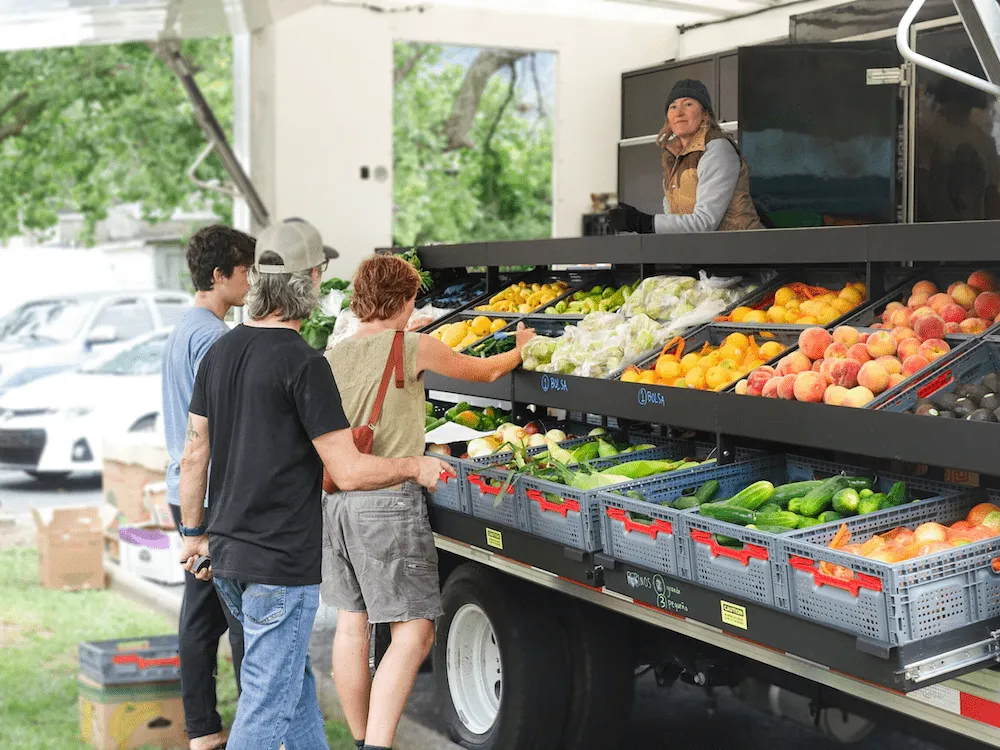ENVIRONMENTAL PARTNERS
Partnerships with purpose

Our impact areas
Rights to Nature
Conservation & restoration
Resilient Communities
Just economies
Eligibility Guidelines
To determine eligibility for the 1% for the Planet Environmental Partners network, organizations must satisfy the following:
Members recommend organizations to apply for the network. Members log in here.
1% for the Planet team assesses an organization's eligibility for the network.
Learn about the partnership assessment.
Position statements
Position statements
Read through the following eligibility determinations.
For more information and answers to other frequently asked questions, please visit our FAQ page.
Carbon credits
Some carbon credits are eligible as certified environmental giving.
Eligible credits must be purchased through approved environmental partners or enterprises and must be verified, high-quality credits according to a limited set of standards, including: American Carbon Registry, Gold Standard, Clean Development Mechanism, and Climate Action Reserve.
1% for the Planet recommends purchasers of carbon credits to research the benefits and critiques of compensating for emissions, including the history and likelihood for these projects to create environmental injustices for Indigenous Peoples, and to choose solutions that explicitly and transparently address the public health and human rights impacts caused by many carbon projects.
1% for the Planet also recommends following a "mitigation hierarchy," meaning to prioritize all possible carbon emission avoidance or reduction before funding verified credits. More expert guidance can be found within the SBTi Net-Zero Standard.
Animal welfare
Animal welfare organizations are eligible for the Environmental Partners network.
Animal welfare organizations include: facilities, such as sanctuaries, zoos, aquariums, wildlife parks, and rescue shelters, and animal welfare advocacy organizations. These facilities often provide critical animal services, including temporary housing, spay/neuter services, medical treatment, permanent habitat solutions, wildlife rehabilitation and reintroduction, the preservation of genetic diversity, and programs that lessen companion and farm animal impacts on local ecosystems.
Eligible facilities-based organizations must prioritize animal well-being and not operate for the primary purpose of entertainment, commercialization, or education at the expense of animal welfare. US-based zoos, aquariums, parks, and sanctuaries must hold current accreditation or certification of animal welfare best practices, such as an Association of Zoos & Aquariums, American Sanctuary Association, or Global Federation of Animal Sanctuaries accreditation, as appropriate.
Organizations operating for the primary purpose of tourism, boutique grooming services, domesticated species breeding operations, voluntary pet boarding facilities, or any purpose that does not prioritize the management of environmental impacts of animal populations or the welfare of individual animals or species are not eligible for the network.
Family planning
Family planning and associated reproductive health services are eligible for the Environmental Partners network.
Family planning services are proven climate adaptation strategies that enable communities, families, and individuals to be resilient to the evolving challenges brought about by climate change. They are also among the most effective methods for reducing carbon emissions.
Family planning services can include programming directly related to access to contraceptives and sex and family planning education.
Ineligible organizations include those whose programmatic activities center on other aspects of reproductive health, including routine healthcare services, doula and midwifery services, disease prevention, fertility enhancement services, research, or any other reproductive health programming that does not lead to environmental outcomes as defined by our Impact Areas.
Youth education
Some youth education organizations are eligible for the Environmental Partners network.
Eligible youth education organizations include any organization specifically driving equity within primary or secondary education for women and girls globally. Also eligible are educational institutions operating for public benefit that lead to better youth understanding of, relationship to, or support of the environment and environmental solutions.
Eligibility is inclusive of diverse knowledge systems, including the natural sciences, social sciences, other STEAM programming, and traditional ecological knowledge (TEK).
Broader general education programming outside of what is described above is ineligible, including programming that does not clearly relate to environmental connections, understandings, or behaviors.
Outdoor Recreation
Some recreation organizations are eligible for the Environmental Partners network.
Outdoor recreation and related infrastructure can have both positive and negative impacts on the environment, including biodiversity, ecosystem resilience, environmental education, and long-term connections to place.
Eligible outdoor recreation organizations must have programming directly tied to improving access to and stewardship of the environment. This can include trail building/access, summer camps, community parks, and outdoor playgrounds.
Ineligible organizations include those whose programmatic activities center on athletics, competitions, competitive training camps, sports leagues, or social clubs/country clubs that do not explicitly identify environmental outcomes as defined by 1% for the Planet Impact Areas.
Emergency response
Some emergency response organizations are eligible for the Environmental Partners network.
Eligible emergency response organizations include those which attend to the immediate response to, or long-term resilience against, natural disasters and the worsening impacts of climate change for both human communities and ecosystems around the world. This includes all short-term and long-term services, such as emergency medical attention (including blood services), infrastructure repair or improvements, search and rescue, fire fighting services, and housing repair.
Organizations primarily attending to human conflict, diplomacy, peace efforts, or pandemic disease prevention are not eligible for the network unless these works are also tied to direct environmental outcomes, services, or targets as listed in our Impact Areas.
Poverty & development
Some poverty and development aid organizations are eligible for the Environmental Partners network.
Eligible development organizations include those attending to:
- Sustainable livelihoods, such as helping people to transition away from extractive industrial practices towards safer and more resilient employment opportunities that mutually benefit people and planet.
- Material provisioning, such as securing food, water, wood, clothing, and other natural resources through sustainable and equitable practices, (e.g. food banking);
- Sanitation, such as reducing human exposure to biohazards, pollutants, and waste;
- Housing security, such as creating sheltering solutions that reduce vulnerability to or contributions to climate disasters, or increase tenure and long-term connection to place
- Finance, such as assisting people-in-need towards livelihoods, provisions, sanitation or housing security solutions listed above.
Poverty and development aid organizations that are generally ineligible for the network include those working on general health/well-being and disease prevention; general economic, industrial and infrastructural development; and governmental institution development that does not tie explicitly to environmental goals as defined by our Impact Areas.
Other ineligible work includes anything deemed exploitative, inhumane or leading to ecological degradation.
Human health
Some human health orgnizations are eligible for the Environmental Partners network.
Eligible human health organizations include those with programs drawing connection to environmental outcomes, or threats to human health from unsafe environments or other environmental factors. Examples include: chemical, pollutant, biohazard or waste exposure; drinking water treatment, sanitation, and access; environmental health programming which reduces exposure hazardous indoor or outdoor habitation or worksite environments; and mental health services or alternative therapies providing access to the healing benefits of nature, natural spaces, nature-relatedness or animal companionship.
Public health organizations ineligible for the network include those attending to: general health and well-being; infectious or chronic disease prevention and research; hospitals and primary physician care; general medical research; and broader healthcare infrastructure, insurance, and advocacy programming that does not tie explicitly to environmental goals as defined by our Impact Areas
Disaster relief
Mobilizing Our Network for Urgent Environmental Action
When disaster strikes, 1% for the Planet compiles lists of vetted, reliable environmental partners providing urgent environmental aid and recovery efforts.
Explore how you can support critical disaster response efforts through trusted partnerships.























































.avif)









































